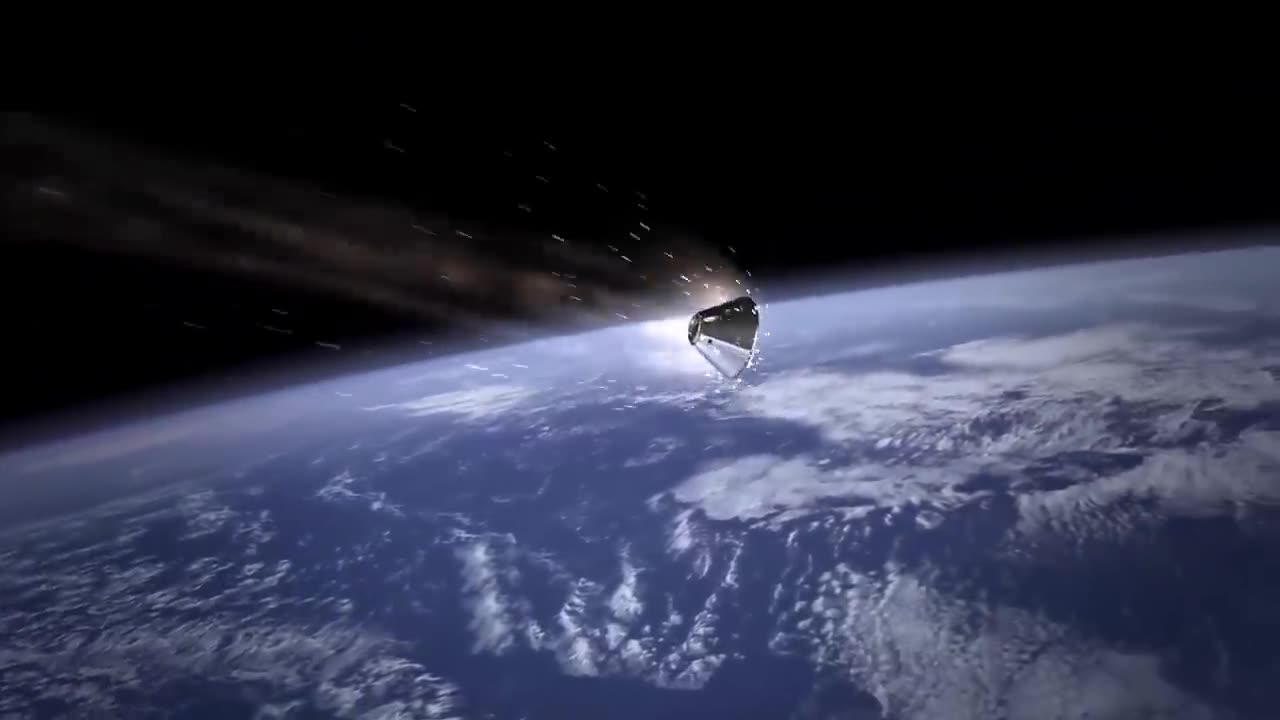Premium Only Content

How Do Spacecraft Slow Down? We Asked a NASA Technologist//dxbduba1
Spacecraft slow down in space by using various methods and propulsion systems, depending on their mission objectives and the specific phase of their journey. I'll outline some of the common methods:
Rocket Engine Firing: This is the most straightforward way to slow down a spacecraft. By firing its rocket engines in the opposite direction of its velocity, a spacecraft can decrease its speed. The principle is based on Newton's third law of motion: for every action, there is an equal and opposite reaction. The expelled exhaust gas from the rocket engines provides the thrust needed to slow down the spacecraft.
Aerobraking: For missions that involve entering a planet's or moon's atmosphere, aerobraking is used. The spacecraft dips into the atmosphere at a specific angle, using the planet's atmosphere to slow it down. The friction between the spacecraft and the atmosphere generates drag, reducing the spacecraft's speed.
Gravity Assists: In some cases, spacecraft can use the gravity of a celestial body to change their trajectory and speed. By performing a gravity assist maneuver, a spacecraft can gain or lose velocity, depending on the direction of the gravity assist. This technique is often used to save fuel or increase a spacecraft's speed.
Ion Propulsion: Ion propulsion systems are more efficient than traditional chemical rocket engines and are often used for deep-space missions. These engines continuously expel ions at high speeds, creating thrust and gradually slowing down the spacecraft.
Tethers: Electrodynamic tethers can be deployed in space to interact with a planet's magnetic field. By generating an electrical current through the tether, the spacecraft can create magnetic forces that act as a brake, slowing it down.
Orbital Mechanics: Spacecraft can use precise orbital mechanics to alter their speed and trajectory. For example, by changing their orbit's shape or inclination, they can adjust their speed relative to a target body.
Ballooning: In the case of missions involving atmospheres with extremely low densities, such as Venus, some spacecraft have used inflatable balloons or aerodynamic devices to slow down and navigate.
The specific method chosen depends on the spacecraft's design, its mission profile, and the celestial body it is targeting. NASA and other space agencies carefully plan and execute these maneuvers to achieve their mission objectives while conserving fuel and energy whenever possible.
-
 LIVE
LIVE
The Shannon Joy Show
29 minutes agoGold Surge Persists Signaling Recession, More Inflation & Potential War - Live W/ Peter Schiff!
121 watching -
 LIVE
LIVE
Grant Stinchfield
56 minutes agoThe People Have Spoken: Trump Rising, Democrats Reeling
85 watching -
 LIVE
LIVE
Trumpet Daily
41 minutes agoTrumpet Daily LIVE | Oct 8, 2025
173 watching -
 LIVE
LIVE
Outspoken with Dr. Naomi Wolf
38 minutes ago"October 7: Israel, with all its Flaws, isn't Making me a Zionist. Anti-Semitism Is."
40 watching -
 1:56:24
1:56:24
Benny Johnson
2 hours ago🚨James Comey in Court LIVE Right Now on Criminal Charges | Portland Anarchy Against ICE EXPOSED
22.9K36 -
 1:01:01
1:01:01
VINCE
4 hours agoThe Next CA Governor May Be MUCH Worse Than Newsom | Episode 142 - 10/08/25
156K94 -
 LIVE
LIVE
Side Scrollers Podcast
1 hour agoTwitch CEO Testifies in Congress + Hasan Piker Accused of DOG Abuse + More | Side Scrollers
592 watching -
 1:10:41
1:10:41
MYLUNCHBREAK CHANNEL PAGE
2 hours agoBuildings That Shouldn’t Be Here
4.88K6 -
 1:03:27
1:03:27
The Big Mig™
3 hours agoIs Pam Bondi The Hero We All Hoped For?
3.23K15 -
 LIVE
LIVE
Caleb Hammer
18 hours ago$67,000 Of K-Pop Debt | Financial Audit
84 watching
